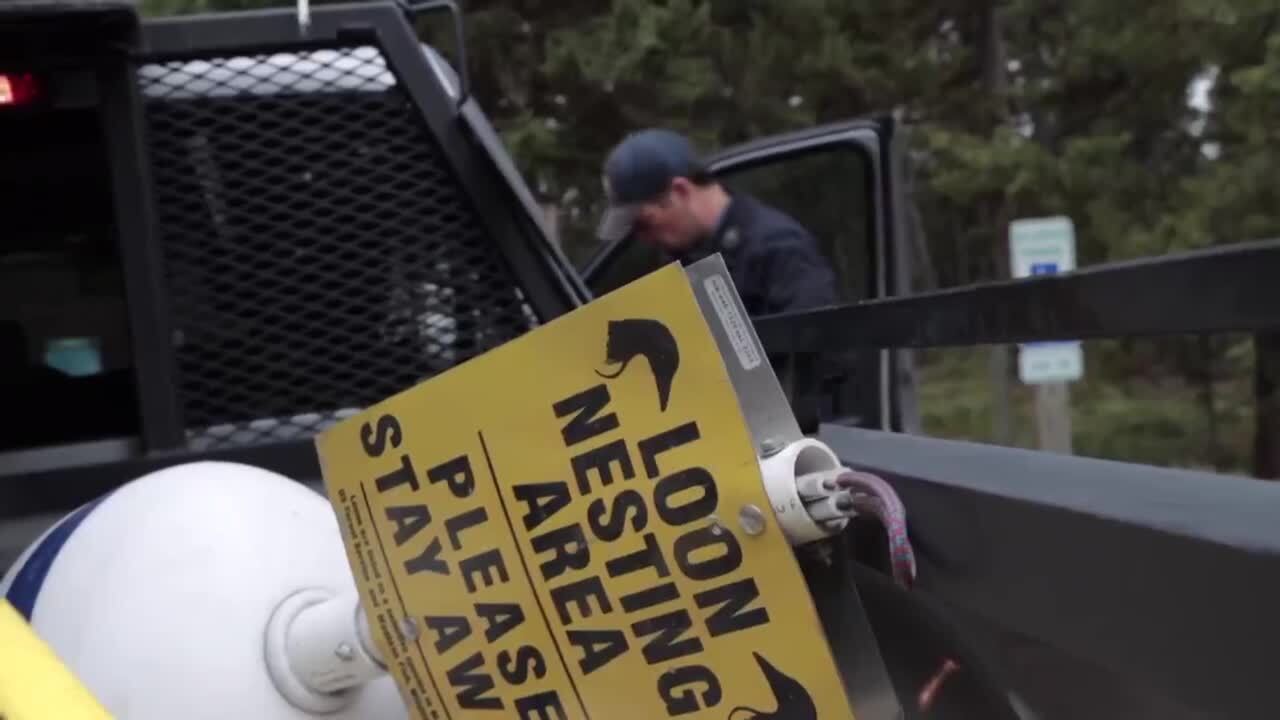When recreating on a lake a tuxedoed bird may catch your eye.
The common loon is a water bird that is becoming uncommon on many of our lakes. The characteristic sound of a loon signifies early summer, but summer activities are threatening the species.
“If they are repeatedly disturbed over and over again, they may just abandon the site completely,” noted wildlife biologist Torrey Ritter who has the remarkable task of protecting loons.
Loons are water birds and are quite a unique sight to see on lakes. Their bodies are built for water as their legs are placed far back on their bodies which makes walking on land difficult but in the water, they’re powerful, agile divers.

“They're amazingly good at swimming underwater if you're ever lucky enough to see one swim underneath you they're using their wings, they're using their back feet which are webbed,” Ritter explained. “And they're super-efficient hunters. They're chasing down fish and crayfish, and leeches in some lakes.”
Loons are a migratory bird species that spend their winters along the coast of the United States. “So, if you go to the Oregon coast or the Texas coast in the winter then you may see the loons out in the ocean,” Ritter said.
They then migrate inland usually around the time the ice comes off lakes, and there they start defending their territory against other loon pairs. Loons are an extremely territorial species which means usually only one mating pair will occupy an entire lake.
“Because they are limited by the number of lakes, you'll actually see these very heated very violent territorial battles because so many loons are trying to get the few lakes that are available,” Ritter explained. “So early in the season, there may be several pairs on a lake competing with one another to get that nest site.”
This means the number of nesting pairs is limited to the number of available lakes. Although not endangered, they are very susceptible to disturbances often caused by people

“Because they are vulnerable to disturbance, they have a fairly low reproductive rate. They only have one or two chicks per year and often won't re-nest. So they'll only nest one time. And because they are limited by the number of lakes we have,” Ritter said.
Ritter has set out to protect this vulnerable species, “if we weren't out here trying to protect those nest sites, we would potentially see declines in that population fairly quickly.“
It takes a great effort to protect loons. Biologists and volunteers carefully pinpoint their exact nest sites.
“So, we have volunteers go out and see exactly where those nest sites are and then we'll put out these things called loon buoys. Which is basically just a big PVC pipe with a plastic ball on top if it. And a yellow sign that just tells people there are loons nesting in this area please stay away,” Ritter said.
He hauls the buoys into a manned canoe and places them near loon nests, “so, we put the loon buoys in a semi-circle out in the lake around the loon nest site.” The objective of this task is for anyone paddleboarding, canoeing, or motor boating that comes across these signs to know to stay out of that area.

“What we are trying to avoid is people getting close enough that the female will get off the nest. And if she does that could cause the eggs to cool down so they may not be viable, or it may give predators access to the nests,” Ritter explained. "Or if they are repeatedly disturbed over and over again then they may just abandon the site completely because it's just not worth the time and energy for them to try and nest there if they're going to keep getting disturbed."
The program so far has been quite successful in ensuring a loon’s babies stay alive.
“Since we started implementing this program, we've had a really good success with getting those young loons to the fledgling stage where they're actually off the nest and out swimming on the lake,” Ritter said.

Ritter wants to remind people that the unique adaptations of a loon's body types make water such an important piece of survival.
“They're so directly tied to water that they can barely get around on land. In fact, if a loon lands in an area that is too small -- it doesn't have room to take off -- they will basically just become completely stranded there, and there are loons that have died because they have landed on a flooded parking lot,” Ritter said. “There was a bunch of rain and it looked like a lake. The loons will land on that and then they can't get going again to take off. So, it's just a really unique adaptation that their legs are so far back on their body that they can't get upright and walk along like you'd expect."







